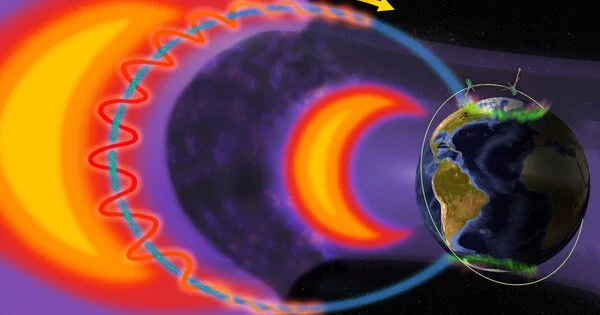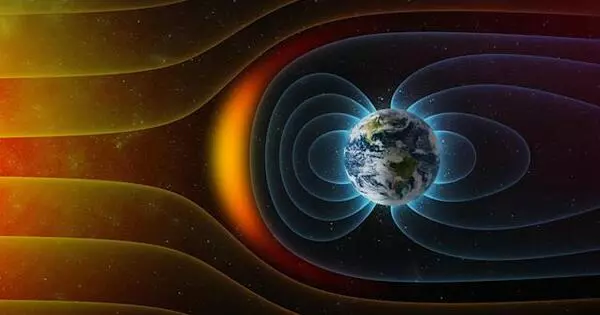UCLA scientists have identified a new source of super-fast, powerful electrons showering down on Earth, a phenomena that contributes to the gorgeous aurora borealis but also poses risks to satellites, spacecraft, and astronauts.
Using the ELFIN mission, a pair of miniature satellites built and operated on the UCLA campus by undergraduate and graduate students directed by a small team of professional mentors, the researchers saw unexpected, rapid “electron precipitation” from low-Earth orbit.
By combining the ELFIN data with more distant observations from NASA’s THEMIS spacecraft, the scientists determined that the sudden downpour was caused by whistler waves, a type of electromagnetic wave that ripples through plasma in space and affects electrons in the Earth’s magnetosphere, causing them to “spill over” into the atmosphere.
“ELFIN is the first satellite to measure these super-fast electrons. The mission is yielding new insights due to its unique vantage point in the chain of events that produces them.”
said Xiaojia Zhang, lead author and a researcher in UCLA’s department of Earth, planetary and space sciences
Their findings, which were published on March 25 in the journal Nature Communications, show that whistler waves cause significantly more electron rain than current theories and space weather models indicate.
Xiaojia Zhang, principal author and professor of Earth, planetary, and space sciences at UCLA, said “ELFIN is the first satellite to measure these super-fast electrons.” Due to its unique vantage position in the chain of events that produces them, the mission is giving new insights.
The near-Earth space environment, which is loaded with charged particles circling in vast rings around the globe known as Van Allen radiation belts, is important to that chain of events. Electrons in these belts bounce between the Earth’s north and south poles in slinky-like spirals. Whistler waves are formed within the radiation belts under particular conditions, energizing and speeding up the electrons. This essentially lengthens the electrons’ journey paths to the point where they fall out of the belts and precipitate into the atmosphere, resulting in electron rain.
According to Vassilis Angelopolous, a UCLA professor of space physics and ELFIN’s primary scientist, one may consider the Van Allen belts as a vast reservoir filled with water—or, in this case, electrons. Water periodically spirals down into a relief drain as the reservoir fills, preventing the basin from overflowing. When huge waves form in the reservoir, however, the sloshing water goes over the edge faster and in greater volume than the relief drainage. ELFIN, which is downstream of both rivers, can accurately estimate their contributions.

The ELFIN measurements of low-altitude electron rain, along with THEMIS observations of whistler waves in space and extensive computer modeling, allowed the team to grasp in detail how the waves generate rapid torrents of electrons to pour into the atmosphere.
Current theories and space weather models, while accounting for other sources of electrons entering the atmosphere, do not foresee this extra whistler wave-induced electron flow, which can influence Earth’s atmospheric chemistry, pose dangers to spacecraft, and harm low-orbiting satellites.
The researchers also demonstrated that during geomagnetic storms, which are produced by increased solar activity and can alter near-Earth space and the Earth’s magnetic environment, this type of radiation-belt electron loss to the atmosphere can increase dramatically.
Although space is often regarded as distinct from our upper atmosphere, the two are intricately linked, Angelopoulos explained. “Knowing how they’re connected can help satellites and astronauts passing through the region, which is becoming increasingly essential for business, telecommunications, and space tourism.”
ELFIN (Electron Losses and Fields Investigation), which is financed by NASA and the National Science Foundation, has employed over 300 UCLA students since its launch in 2013. The two microsatellites, which are around the size of a loaf of bread and weigh about 8 pounds each, were put into orbit in 2018 and have since been tracking the activities of energetic electrons and assisting scientists in better understanding the effects of magnetic storms in near-Earth space. The satellites are managed by the UCLA Mission Operations Center, which is located on campus.





